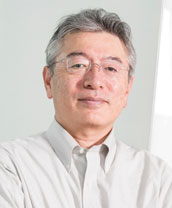- Our Story
- Publications & Resources
- Publications & Resources
- Publications
- IEEE Signal Processing Magazine
- IEEE Journal of Selected Topics in Signal Processing
- IEEE Signal Processing Letters
- IEEE Transactions on Computational Imaging
- IEEE Transactions on Image Processing
- IEEE Transactions on Information Forensics and Security
- IEEE Transactions on Multimedia
- IEEE Transactions on Signal and Information Processing over Networks
- IEEE Transactions on Signal Processing
- IEEE TCI
- IEEE TSIPN
- Data & Challenges
- Submit Manuscript
- Guidelines
- Information for Authors
- Special Issue Deadlines
- Overview Articles
- Top Accessed Articles
- SPS Newsletter
- SigPort
- SPS Resource Center
- Publications FAQ
- Blog
- News
- Dataset Papers
- Conferences & Events
- Community & Involvement
- Professional Development
- For Volunteers
- Information for Authors-OJSP
-
Home
Conferences Events IEEE Signal Processing Magazine IEEE SPL Article IEEE TIFS Article IEEE TMM Article IEEE TSP Article Jobs in Signal Processing Lectures Machine Learning Seasonal Schools Signal Processing News SPM Article SPS Distinguished Lectures SPS Newsletter Article SPS Webinar SPS Webinars SPS Webinar Series Webinar webinars
-
Our Story
What is Signal Processing?

The technology we use, and even rely on, in our everyday lives –computers, radios, video, cell phones – is enabled by signal processing. Learn More » -
Publications & Resources
-
SPS Resources
- Signal Processing Magazine The premier publication of the society.
- SPS Newsletter Monthly updates in Signal Processing
- SPS Resource Center Online library of tutorials, lectures, and presentations.
- SigPort Online repository for reports, papers, and more.
- SPS Feed The latest news, events, and more from the world of Signal Processing.
-
SPS Resources
-
Conferences & Events
-
Community & Involvement
-
Membership
- Join SPS The IEEE Signal Processing Magazine, Conference, Discounts, Awards, Collaborations, and more!
- Chapter Locator Find your local chapter and connect with fellow industry professionals, academics and students
- Women in Signal Processing Networking and engagement opportunities for women across signal processing disciplines
- Students Scholarships, conference discounts, travel grants, SP Cup, VIP Cup, 5-MICC
- Young Professionals Career development opportunities, networking
- Get Involved
-
Technical Committees
- Applied Signal Processing Systems
- Audio and Acoustic Signal Processing
- Bio Imaging and Signal Processing
- Computational Imaging
- Image Video and Multidimensional Signal Processing
- Information Forensics and Security
- Machine Learning for Signal Processing
- Multimedia Signal Processing
- Sensor Array and Multichannel
- Signal Processing for Communication and Networking
- Signal Processing Theory and Methods
- Speech and Language Processing
- Technical Working Groups
- More TC Resources
-
Membership
-
Professional Development
-
Professional Development
- Signal Processing Mentorship Academy (SigMA) Program
- Micro Mentoring Experience Program (MiME)
- Distinguished Lecturer Program
- Distinguished Lecturers
- Distinguished Lecturer Nominations
- Past Lecturers
- Distinguished Industry Speaker Program
- Distinguished Industry Speakers
- Distinguished Industry Speaker Nominations
- Industry Resources
- IEEE Training Materials
- Jobs in Signal Processing: IEEE Job Site
-
Career Resources
- SPS Education Program Educational content in signal processing and related fields.
- Distinguished Lecturer Program Chapters have access to educators and authors in the fields of Signal Processing
- Job Opportunities Signal Processing and Technical Committee specific job opportunities
- Job Submission Form Employers may submit opportunities in the area of Signal Processing.
-
Professional Development
-
For Volunteers
-
For Board & Committee Members
- Board Agenda/Minutes* Agendas, minutes and supporting documentation for Board and Committee Members
- SPS Directory* Directory of volunteers, society and division directory for Board and Committee Members.
- Membership Development Reports* Insight into the Society’s month-over-month and year-over-year growths and declines for Board and Committee Members
-
For Board & Committee Members
Popular Pages
Today's:
- Information for Authors
- (ASRU 2025) 2025 IEEE Automatic Speech Recognition and Understanding Workshop
- Information for Authors-SPL
- IEEE Transactions on Image Processing
- IEEE Transactions on Information Forensics and Security
- IEEE Transactions on Multimedia
- 2030 IEEE International Conferences on Acoustics, Speech, and Signal Processing (ICASSP 2030)
- IEEE Signal Processing Letters
- New Podcast Episode: Efficient Machine Learning Systems for Signal Processing
- Membership
- (ICME 2026) 2026 IEEE International Conference on Multimedia and Expo
- IEEE Transactions on Signal Processing
- New Tool Streamlines Article Proofing for Authors
- IEEE Transactions on Audio, Speech and Language Processing
- Call for Papers for ICASSP 2026 Now Open!
All time:
- Information for Authors
- Submit a Manuscript
- IEEE Transactions on Image Processing
- IEEE Transactions on Information Forensics and Security
- IEEE Transactions on Multimedia
- IEEE Transactions on Audio, Speech and Language Processing
- IEEE Signal Processing Letters
- IEEE Transactions on Signal Processing
- Conferences & Events
- IEEE Journal of Selected Topics in Signal Processing
- Information for Authors-SPL
- Conference Call for Papers
- Signal Processing 101
- IEEE Signal Processing Magazine
- Guidelines
Last viewed:
- Call for Papers for ICASSP 2026 Now Open!
- SPS SPTM TC Webinar: A Deep Dive into Recent Advances in Stochastic Approximation
- (ASRU 2025) 2025 IEEE Automatic Speech Recognition and Understanding Workshop
- Guidelines for Reviewers
- Conferences & Events
- Guidelines for Associate Editors
- Guidelines
- (ICASSP 2027) 2027 IEEE International Conference on Acoustics, Speech, and Signal Processing
- Submit a Manuscript
- Information for Authors
- Membership
- IEEE Meeting & Conference Management (MCM)
- Conference Call for Papers
- Information for Authors-SPM
- Access Restricted
Newsletter Menu
Newsletter Categories
Top Reasons to Join SPS Today!
1. IEEE Signal Processing Magazine
2. Signal Processing Digital Library*
3. Inside Signal Processing Newsletter
4. SPS Resource Center
5. Career advancement & recognition
6. Discounts on conferences and publications
7. Professional networking
8. Communities for students, young professionals, and women
9. Volunteer opportunities
10. Coming soon! PDH/CEU credits
Click here to learn more.
News and Resources for Members of the IEEE Signal Processing Society
Member Highlights: Satoshi Nakamura
 Satoshi Nakamura received his B.S. degree in electronics engineering from Kyoto Institute of Technology, Kyoto, in 1981. He received his Ph.D. in informatics from Kyoto University in 1992. He was the Department Head and Director of ATR Spoken Language Communication Research Laboratories, Kyoto, Japan in the period of 2000-2008. He was the Director-General of Keihanna Research Laboratories and Executive Director of Knowledge-Creating Communication Research Center, National Institute of Information and Communications Technology in 2009-2010. He is currently the director of Data Science Center and full professor of Augmented Human Communication Laboratory, Graduate School of Science and Technology, Nara Institute of Science and Technology. He is also the Team Leader of the Tourism Information Analytics Team at Center for Advanced Intelligence Project (AIP) Center, RIKEN, and Honorary Professor at Karlsruhe Institute of Technology, Germany. His research interests include modeling and developing systems of spoken language processing, speech processing, natural language processing, and data science. He is one of the world leaders in speech-to-speech translation research and has been serving in a wide range of research projects in that field. He published more than 120 peer-reviewed academic journals and 500 peer-reviewed international conference papers. He was awarded various international and domestic awards including the ELRA Antonio Zampolli Prize and commendation for science and technology by the Minister of Education, Culture, Sports, Science and Technology, Japan. He was an elected Board Member of the International Speech Communication Association, ISCA, in the period of June 2011-2019, an IEEE Signal Processing Magazine Editorial Board member in 2012-2015, and IEEE SPS Speech and Language Technical Committee Member in 2013-2015. He is ATR Fellow, IPSJ Fellow, ISCA Fellow, and IEEE Fellow.
Satoshi Nakamura received his B.S. degree in electronics engineering from Kyoto Institute of Technology, Kyoto, in 1981. He received his Ph.D. in informatics from Kyoto University in 1992. He was the Department Head and Director of ATR Spoken Language Communication Research Laboratories, Kyoto, Japan in the period of 2000-2008. He was the Director-General of Keihanna Research Laboratories and Executive Director of Knowledge-Creating Communication Research Center, National Institute of Information and Communications Technology in 2009-2010. He is currently the director of Data Science Center and full professor of Augmented Human Communication Laboratory, Graduate School of Science and Technology, Nara Institute of Science and Technology. He is also the Team Leader of the Tourism Information Analytics Team at Center for Advanced Intelligence Project (AIP) Center, RIKEN, and Honorary Professor at Karlsruhe Institute of Technology, Germany. His research interests include modeling and developing systems of spoken language processing, speech processing, natural language processing, and data science. He is one of the world leaders in speech-to-speech translation research and has been serving in a wide range of research projects in that field. He published more than 120 peer-reviewed academic journals and 500 peer-reviewed international conference papers. He was awarded various international and domestic awards including the ELRA Antonio Zampolli Prize and commendation for science and technology by the Minister of Education, Culture, Sports, Science and Technology, Japan. He was an elected Board Member of the International Speech Communication Association, ISCA, in the period of June 2011-2019, an IEEE Signal Processing Magazine Editorial Board member in 2012-2015, and IEEE SPS Speech and Language Technical Committee Member in 2013-2015. He is ATR Fellow, IPSJ Fellow, ISCA Fellow, and IEEE Fellow.
We approached Satoshi Nakamura with a few questions:
1. Why did you choose to become faculty in the field of Signal Processing?
2. How does your work affect society?
We at ATR established an international consortium for speech translation called CSTAR, Consortium for Speech Translation Advanced Research, collaborated with US, EU, and Asian research institutions in early ‘90. Later this consortium started an International Workshop on Spoken Language Translation, IWSLT, in 2004. The IWSLT also started various shared tasks to enhance the development of speech translation-related research.
In Japan, the speech translation technologies developed at ATR and NICT have been licensed to various industries and deployed to various services, including speech translation services for inbound and outbound tourists. It is expected that further research on the automatic speech interpretation technologies will help online speech interpretation services and speech dubbing of multiple languages.
3. What challenges have you had to face to get where you are today?
- The most difficult part of my research was to ensure sustainable research funds and to keep excellent research colleagues. It was nice to have lots of motivated graduate students at NAIST but they left the lab after graduation. In the long run, the graduates could be a strong competitor. Another difficulty was that research laboratories such as ATR and NICT are not able to provide sufficient tenure researcher positions.
- The second challenge was to find where to work. I was lucky because I had chances to move when I needed to move. We have to find an optimal place to work on what we want to do. Accumulating small successes when young is very useful to find the next position for new research.
- The balance between novelty and performance. The continuous improvements bring solid performance and more publications, both of which are inevitable to survive in the world of research. On the other hand, innovative idea does not always bring better performance compared to the existing state-of-the-art systems. Only a good combination of novelty and performance can create a breakthrough to a new paradigm. I prefer to work on innovative idea, but it takes time especially for preparing original primal data and new evaluation metrics. The workload is much heavier while the chance rate of success is lower. I would say that the balance of these two is a very difficult problem.
4. What advice would you give to scientists/engineers in signal processing?
5. Anything else that you would like to add?
To learn more about Satoshi Nakamura and for more information, visit his webpage.
Open Calls
Conferences & Events
Society News
- ME-UYR Initiative: Calls for Student Participation and Mentor and Registration for Student-Mentor Event
- Contribute to Commercial Standards by Joining the IEEE Synthetic Aperture Standards Committee
- 72 Signal Processing Society Members Elevated to Senior Member!
- Job Opportunities in Signal Processing
- Election of President-Elect, Regional Directors-at-Large and Members-at-Large
- Call for Nominations: Awards Board and Nominations & Appointments Committee
- Updated SPS Chapter Logo Usage and Branding Guidelines
Member Highlights
Technical Committee News
SPS Social Media
- IEEE SPS Facebook Page https://www.facebook.com/ieeeSPS
- IEEE SPS X Page https://x.com/IEEEsps
- IEEE SPS Instagram Page https://www.instagram.com/ieeesps/?hl=en
- IEEE SPS LinkedIn Page https://www.linkedin.com/company/ieeesps/
- IEEE SPS YouTube Channel https://www.youtube.com/ieeeSPS
Home | Sitemap | Contact | Accessibility | Nondiscrimination Policy | IEEE Ethics Reporting | IEEE Privacy Policy | Terms | Feedback
© Copyright 2025 IEEE - All rights reserved. Use of this website signifies your agreement to the IEEE Terms and Conditions.
A public charity, IEEE is the world's largest technical professional organization dedicated to advancing technology for the benefit of humanity.









